[ad_1]
To make a great radio hit in 1994, it often came down to marketing — from the perfectly packaged music video and the artist’s image, to their uniformed styling or choreography. Essentially, whatever was amenable to popular culture.
Think Boyz II Men’s “I’ll Make Love To You,” Ace of Base’s “The Sign,” Aerosmith’s “Crazy” and Salt-N-Pepa featuring En Vogue’s “Whatta Man.” These were and remain classic songs; they also were made to fit neatly inside the nebulous realm of pop music.
Then there was 26-year-old Lisa Loeb, the soft-voiced singer-songwriter who rippled through the mainstream with a look and sound defying all pretension in a music video that is mostly her walking around singing deeply personal lyrics in a virtually empty apartment.
Nothing about the video for “Stay (I Missed You)” was typical for its time. Not its wistful yet accessible guitar riff, not the fact that it became the lead single of the “Reality Bites” soundtrack when Loeb was still an unsigned artist, or that the movie’s star Ethan Hawke directed it, not Loeb’s clothes and certainly not her quiet indignation.
Wearing a black short-sleeved minidress, matching tights and cat-eyed glasses, Loeb looked into the camera and sang: “You say I talk so all the time” — taking an oh-so-brief pause before defiantly continuing — “So?”
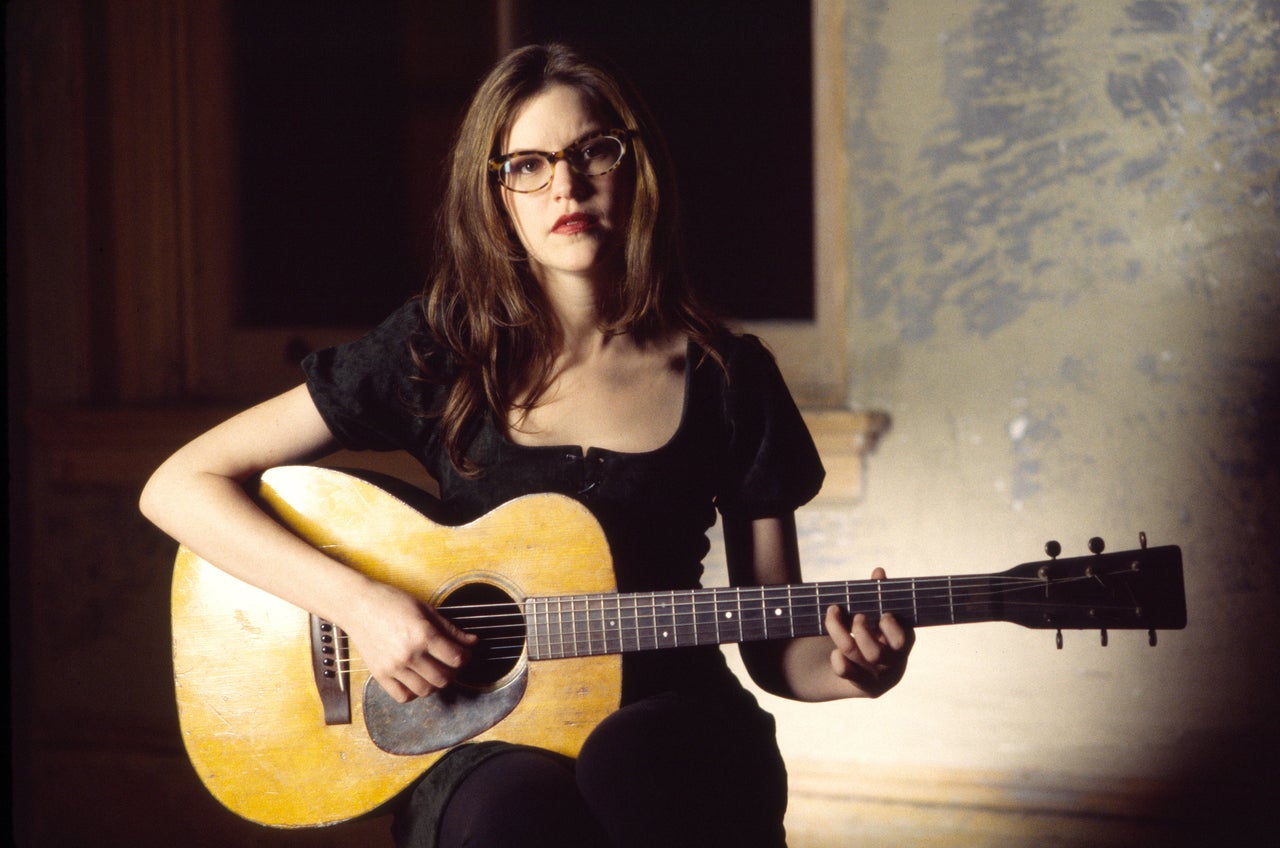
Gary Gershoff via Getty Images
It was that gentle confrontation, coupled with Loeb’s fierce individuality and the simplicity of her music — in actuality, it was far more complex than it sounded — for which she became known. That and her ever-present guitar.
“You can see one of my guitars back there,” Loeb gestures behind her on a recent video call from her Los Angeles home. Looking at her through the Zoom screen, it’s almost like a whole 28 years haven’t passed by. She still wears feline-shaped eyeglasses, still expresses herself softly, yet firmly and still wears short skirts and dresses.
In fact, in one of our two conversations she donned a pink flared miniskirt and a white blouse. “I like wearing short skirts,” she says plainly. “It’s comfortable. I feel strong in them. They are cute.”
And she looked confident in them, mostly because they were and are obviously still uniquely her. But thinking about this idea of having a distinct identity as a musician inside of the gumball machine that was often ’90s pop music, it’s a wonder how an alternative rock artist like Loeb could have ever existed inside of it while actively pushing against it at the same time.
For instance, she didn’t flirt with the camera or sing about sex. She wasn’t a part of a harmonizing girl group singing songs someone else wrote, often through the male gaze. She wore clothes that were, yes, unexpected but were her own decision.
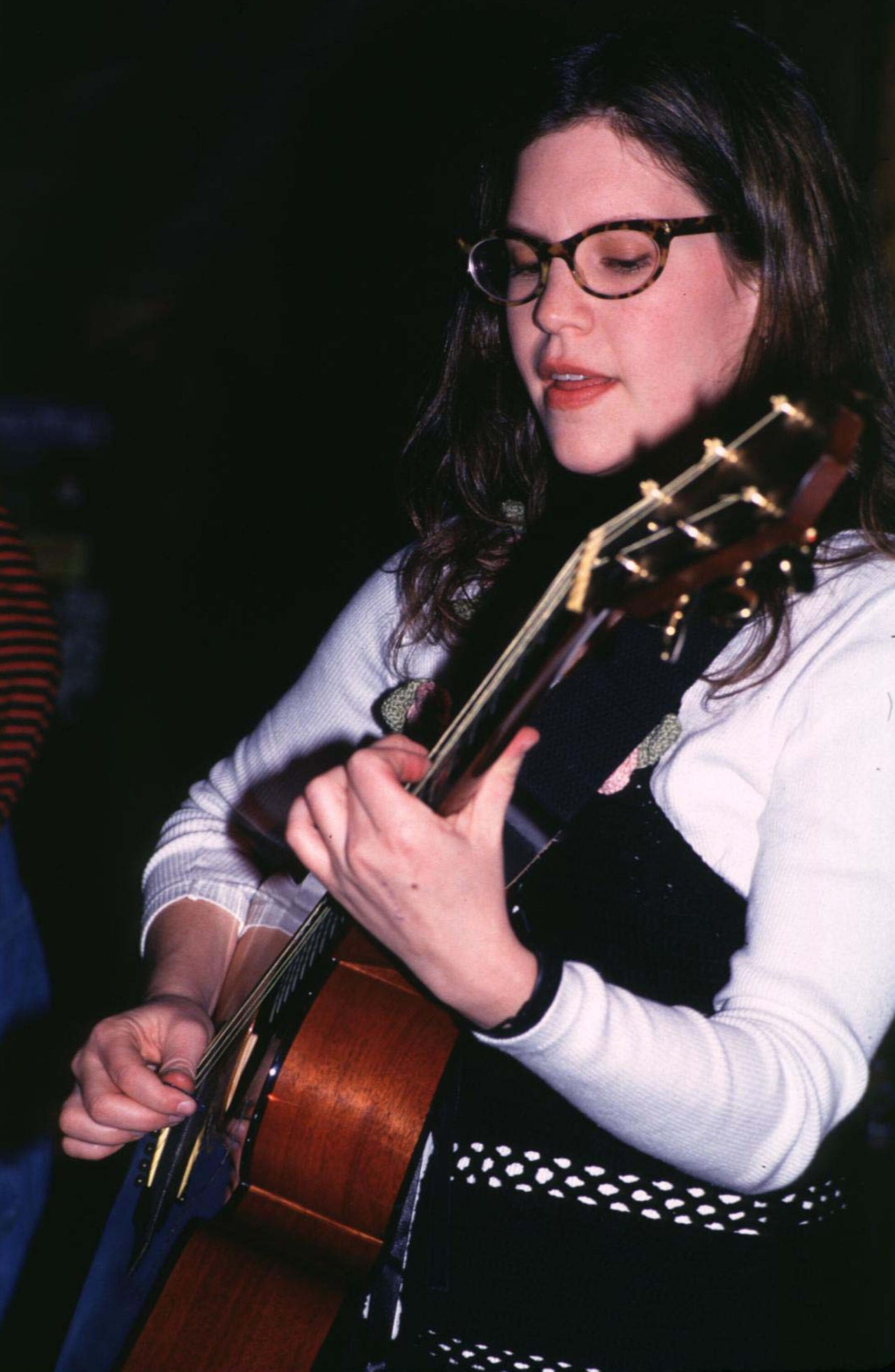
Steve Eichner via Getty Images
Listeners could have projected feminist messages onto her songs because she was a woman boldly singing her truth though lyrics she penned with music she also wrote. But really, it was because almost everything she did musically was specific to her in a music landscape that took great leaps to structure groups of artists to look and sound a certain way.
But that wasn’t who Loeb was. When I asked her about whether she was even trying to make this kind of mark, she smiled and thought of a quote from John Knowles’ “A Separate Peace.” “‘Most of all, he did not want to be like most people were,’” she recited. “‘That is, eaten alive by a half-life semi-lived.’”
This quiet resistance meant that record companies often didn’t know what to do with her or which genre to put her in (she was often categorized as a pop artist, though she identifies as an alternative rock musician).
“People think, ‘Oh, you’re this quiet, shy, pop singer who’s got this one song,’” she said. “Well, I have a rock band and an orchestra, and I had all different kinds of things. I feel like often there was so much more going on beyond the thin layer of what was presented to us on pop radio.”
And yet, she was subjected to some of the same run-of-the-mill objectification that every woman with a radio hit experienced. The press targeted her for what she wore. She was constantly contending with other people’s expectations.
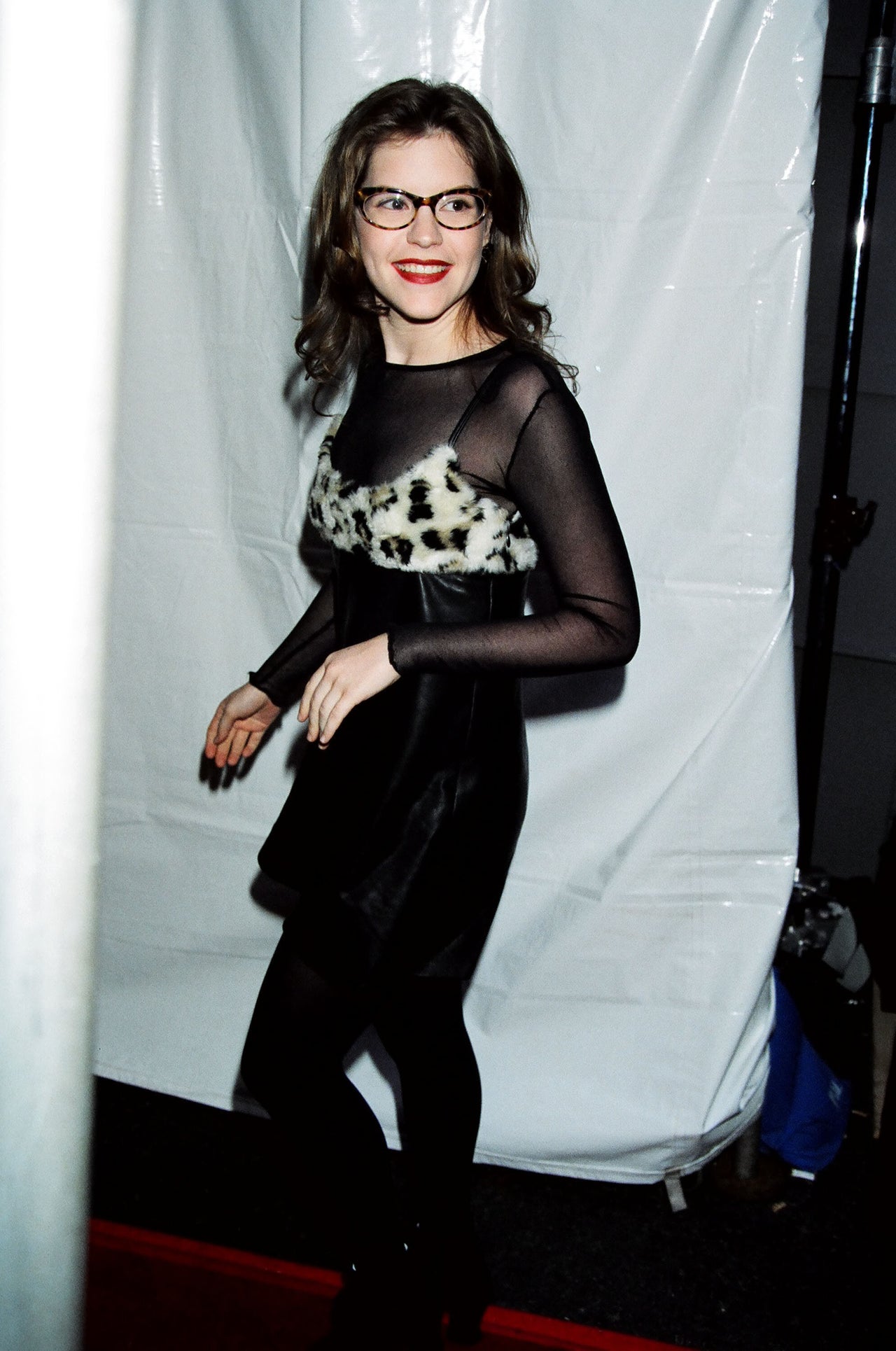
Jeff Kravitz via Getty Images
Loeb said she remembered thinking at the time if people would think she was trying to be “too sexy” and not take her seriously.
“Why should I even have to worry if people are taking me seriously or not?”
Because female musicians back then, and still today, weren’t just regarded by their songs.
It was the entire package around those songs, including the women themselves. Of course women like Loeb ― who sang, wrote and arranged their own songs at a time when that was still considered rare ― were going to feel a way about being picked apart for reasons unrelated to their music.
“That’s the world and feminism and people making judgments on you — about who you are, how you look, what you do,” she said.
Today, 54-year-old Loeb looks back at this time with gratitude. She did, after all, have huge success despite all the industry challenges. It was, as she put it, an “exciting” time.
She was constantly creating and performing. “Stay” catapulted to the No. 1 spot on the charts and was nominated for a Grammy. She was among many artists to perform at Lilith Fair, a concert made up of all-female musicians, including Jewel and Tracy Chapman and formed by fellow singer-songwriter Sarah MacLachlan.
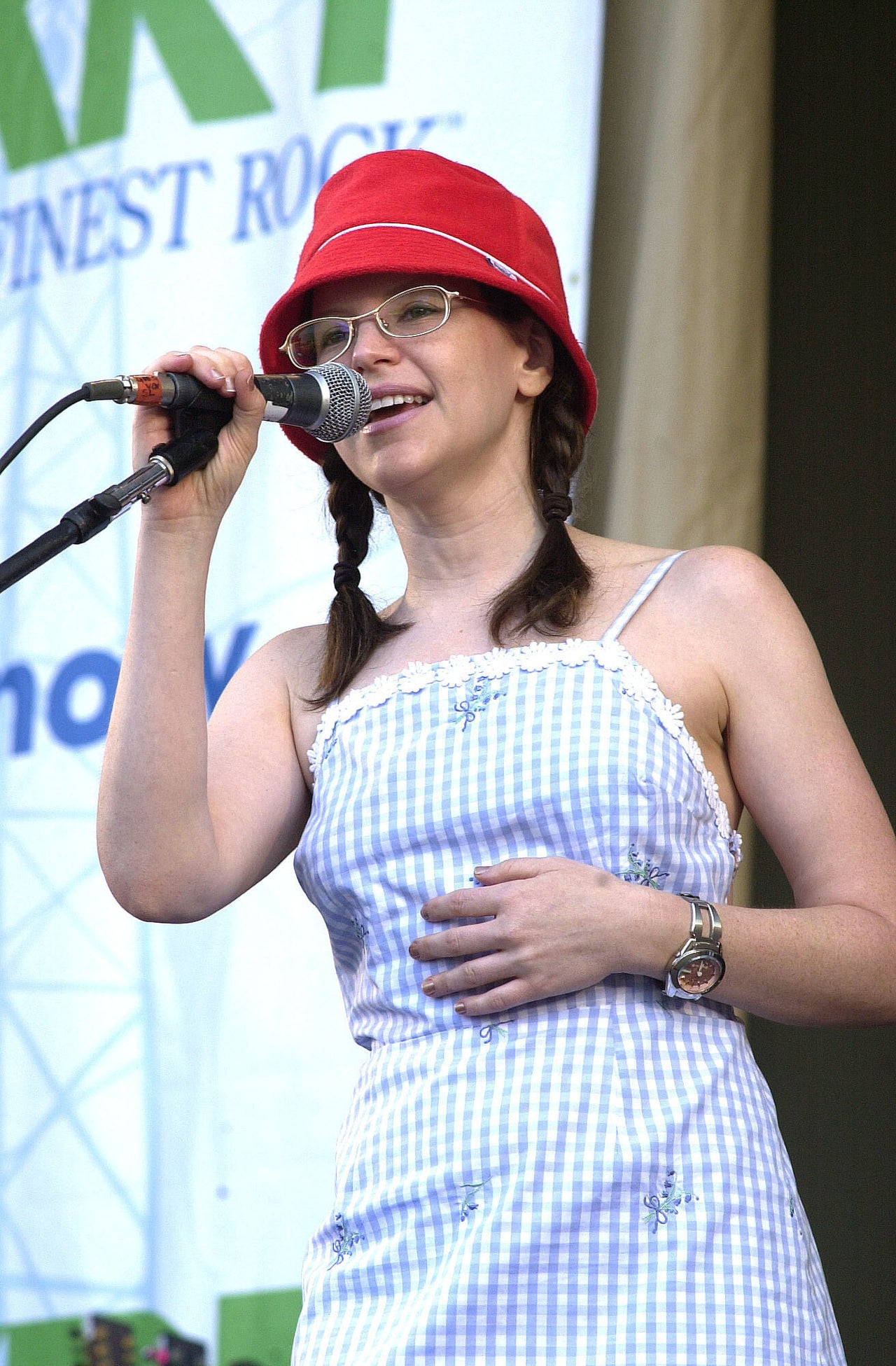
Paul Natkin via Getty Images
But there was a competitiveness that formed around women musicians back then that was exacerbated by the fact that mostly male gatekeepers would feel like one female artist was more than enough. “They were playing one woman on a radio station, and they said, ‘Oh, we already have Sheryl Crow,’” Loeb said. “‘We don’t have space for you,’ which is crazy.”
Like with everything else, it became a learning experience for Loeb. “It’s a very either/or feeling, attitude. And that’s not really how musicians feel or think.” She connected with and was ultimately inspired by her female contemporaries while realizing they were going through some of the same things.
“Even with having plenty of insecurities — let me tell you, there was something inside me that just felt confident,” she emphasized. “I think one of the big things was realizing everybody’s got shyness or insecurities. You feel empowered to realize that you have so much in common.”
That sense of self could perhaps be attributed to growing up a “quiet, shy, tiny little girl” (she’s 5 feet, 2 inches tall) in Dallas, going to an all-girls school, or being able to look to other women like the members of Heart and Olivia Newton-John, or female contemporaries like Edie Brickell.
Not only was she into female artistry that was a bit on the fringes, Loeb was also genuinely interested in women’s voices in music, especially since she started writing music at age 6, wrote her own lyrics and started playing the guitar by age 14.
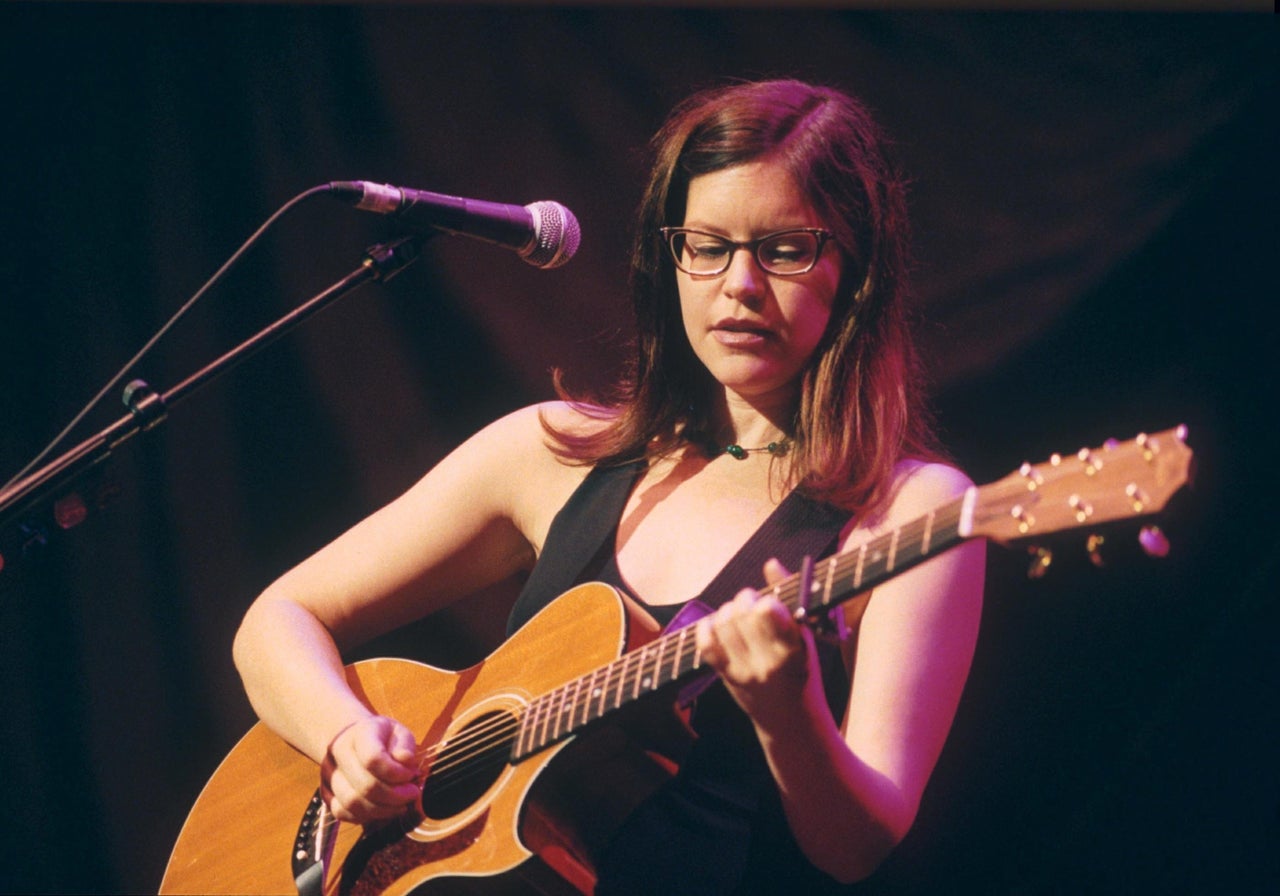
Brian Rasic via Getty Images
“In the ’70s when I was really growing up, there were a lot of women on the radio, in my mind,” she said, listing examples like Barbra Streisand and Dolly Parton. “But there have never been enough women.”
This reality made Loeb even more determined to step out on her own and pave a road for herself. And because she “always has a million ideas” and so many interests — including, currently, reading audiobooks like Viola Davis’ memoir — she made sure she consumed as much information as she could about making music and the music industry at large.
Loeb told me about when she and her high school friends, who, like her, would wear short skirts with shorts underneath, used to get into concerts through their affiliation with the indie record label I.R.S. Records and get backstage access to pick some of their favorite artists’ brains.
“We’d interview the bands,” she said. “And we would film them with cameras. We were big fans. But also, my good friends and I were always approaching it from a journalistic standpoint. We’re also musicians, not groupies, but we’re really interested in behind the scenes.”
So by the time “Stay” was released, Loeb had already been a musician for decades and had a good understanding of the way things worked as well as marketing and presentation.
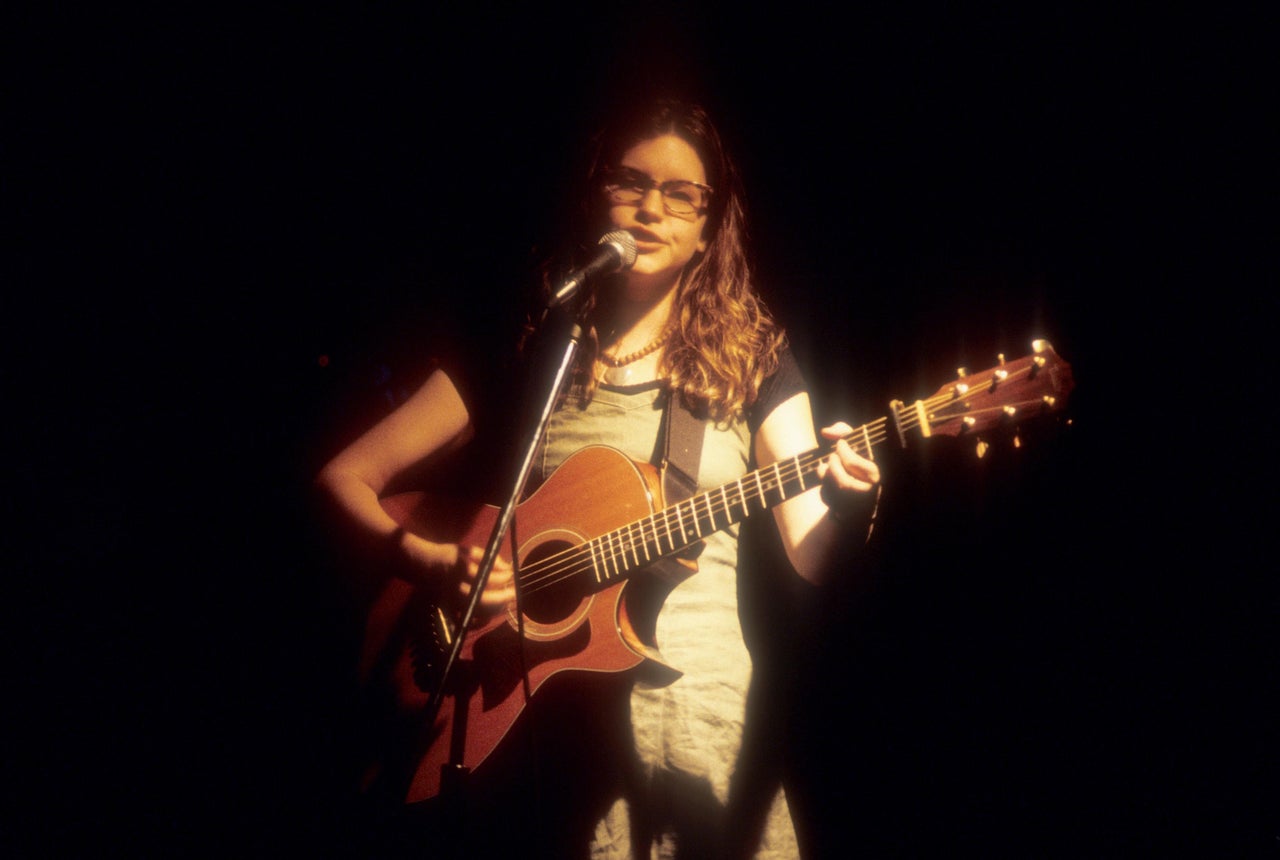
Steve Eichner via Getty Images
In other words, long before YouTube and Spotify gave underground artists today an avenue toward their creative freedom, Loeb was among many independent musicians already doing that by selling their cassette tapes and CDs on the street.
“I had been performing and writing for years and years and recording,” Loeb said. “So, I had a lot of experience as an artist and an independent artist. I was promoting myself, [doing] PR, helping design album covers — all that kind of stuff. I was the leader of my band [Nine Stories].”
“I wasn’t making music for the business of music,” she added. “But I wanted my music to get out there.”
But who could ever really be prepared for the machine that was the mainstream recording industry in the ’90s? On one end, the male-dominated record labels undervalued Loeb’s keen understanding of how to market her own work.
“I felt like the more organized and businesslike I was going into record company meetings, the less attention was paid to what I was saying,” Loeb said. “Nobody wanted to have a marketing meeting with me or discuss the business side of marketing.”
As we were talking, Loeb always remained conscious about how her male counterparts faced their own challenges throughout the decade and doesn’t solely apply hers to being a woman. But she also doesn’t rule out how particularly gendered her experiences sound.
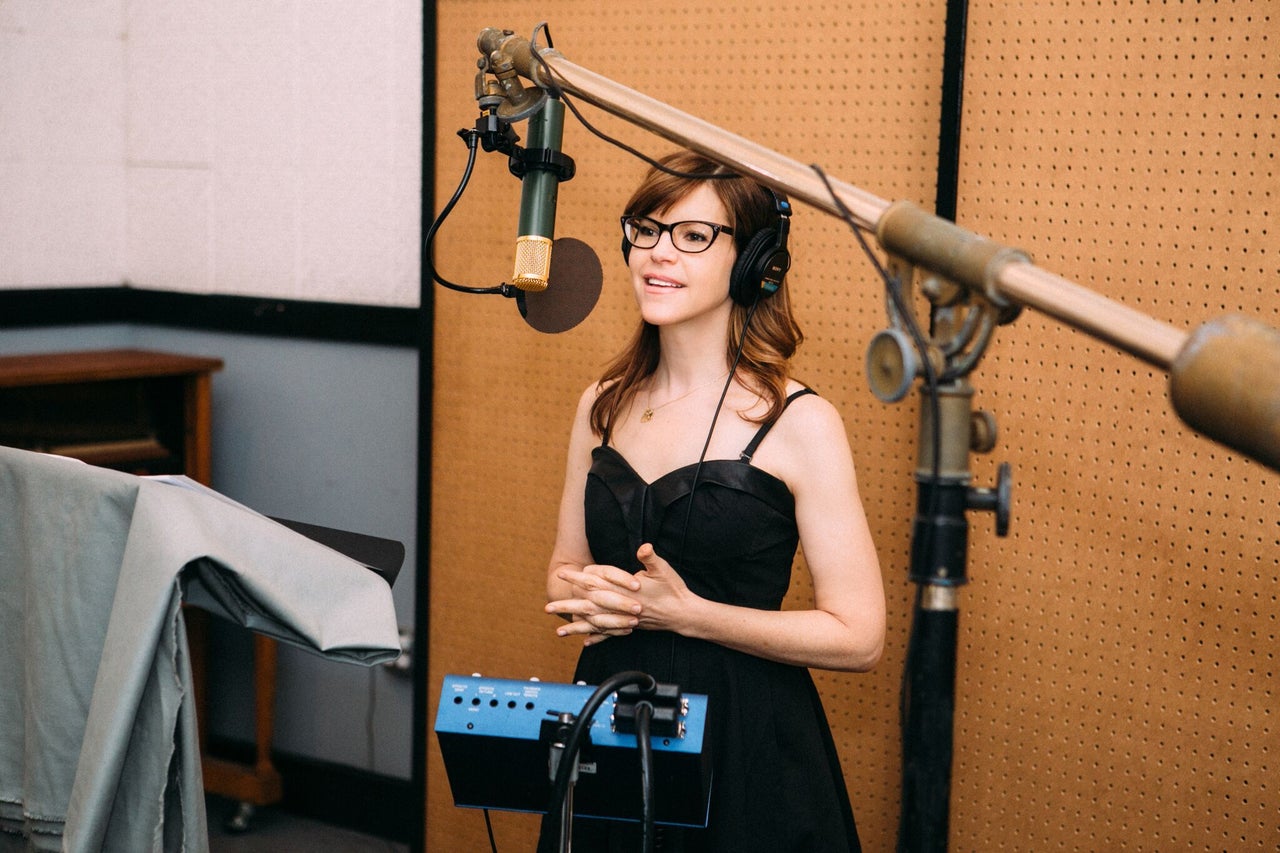
Frances Iacuzzi Photography
“I think they responded better to people who were out of control,” she continued. “I was looked down upon because I like to look people in the eye when I spoke to them.”
That was always the thing about Loeb that made her a bit of an outlier among some of the other female stars of pop radio at the time. She knew who she was as a person as well as a musician, and couldn’t accept being told otherwise. And that was true from day one.
“I was not a big pop person,” Loeb said, thinking back to her youth. “I always liked alternative. I wouldn’t go to a mainstream movie. I wouldn’t listen to mainstream radio. And then all of a sudden, I was on mainstream radio.”
As much as she and others “tried to mainstream our freedom musically in the ’90s,” as she described what she and others attempted to do, she was asked to focus on making a single for her follow-up album “Firecracker.” “I Do” released in 1997, and looked and sounded remarkably different from “Stay,” which was released just three years earlier.
It’s poppier, obviously studio-produced without her band, and most of all, doesn’t sound like it came from someone who thrived on being an independent artist.
“I was just so mad,” Loeb said. “I was just like, ‘I can’t believe this is happening.’”
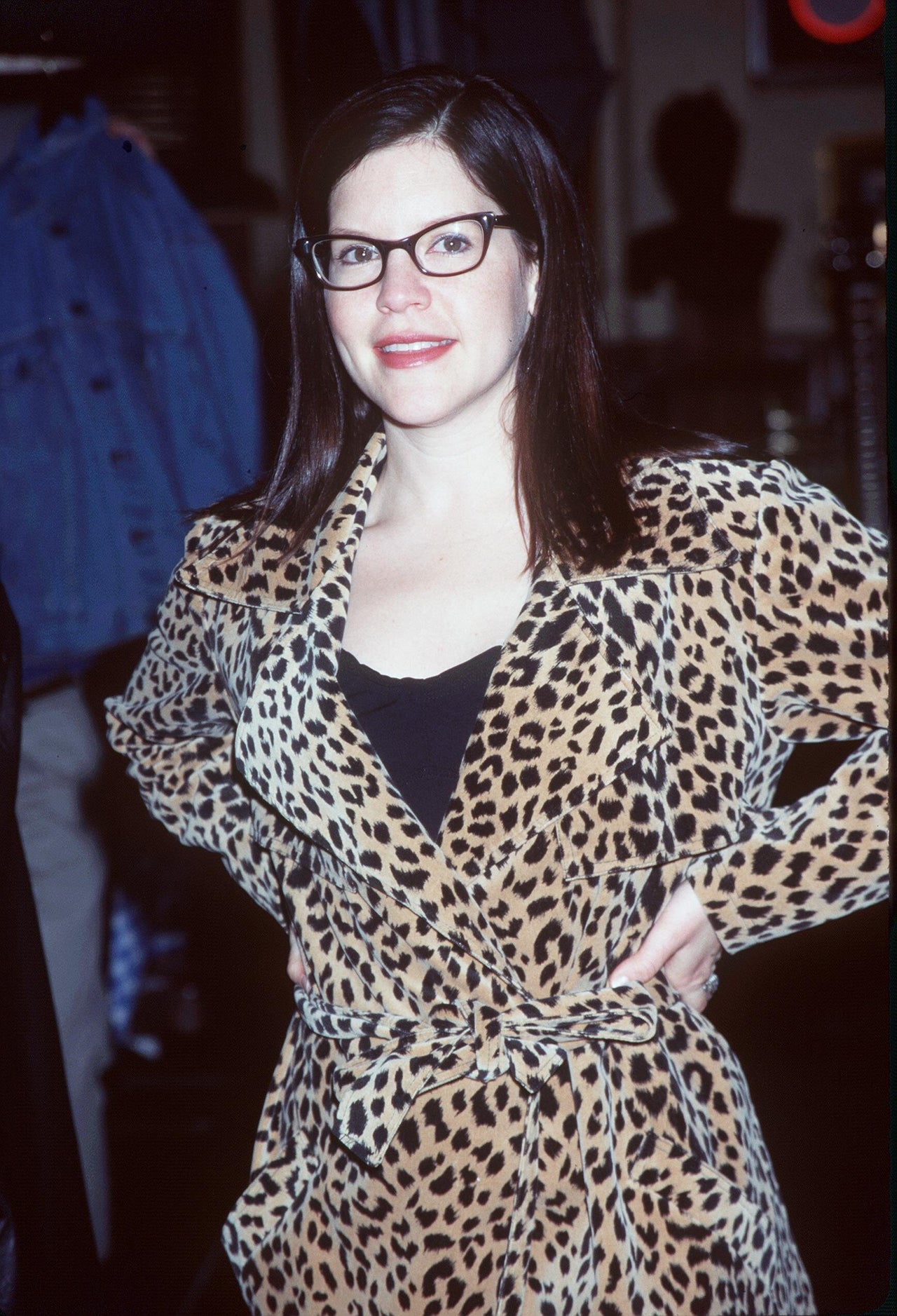
Brenda Chase via Getty Images
“My whole life — and I felt like I’d lived such a long life up until I was, I don’t know, in my late twenties — I had been writing songs forever and feeling so in control. And then, all of a sudden, for a record company to say I needed to write singles just made me so angry.”
Loeb obviously did it, but as she put it, “I was almost like a petulant child. I was like, ‘Fine.’ There was a lot of, ‘Fine, I’ll do it.’”
“I Do” is a much less complex song than her previous ones. And, like a good number of catchy pop songs still today, she realized that it became understood as a love song when it was about an artist being “frustrated” with her record company.
“Years later I was listening to Sara Bareilles singing, ‘I’m not going to write you a love song,’” Loeb reflected. “I’m like, ‘This is such a great song.’ I’m like, ‘Sounds like a song about the record company.’ I looked it up — it was about the record company.”
There was always this “weird push and pull,” as Loeb described it in the ’90s. Because on one hand, you wanted to get your music out. But in order to do so, gatekeepers in the ’90s would expect you to compromise who you were. That’s especially difficult for an independent artist.
For instance, Loeb recalled when a stylist “convinced” her to wear a red spandex dress with mustard yellow tights and Mary Janes for a major publication. It was “such a stupid mistake,” she said. She absolutely hated it.
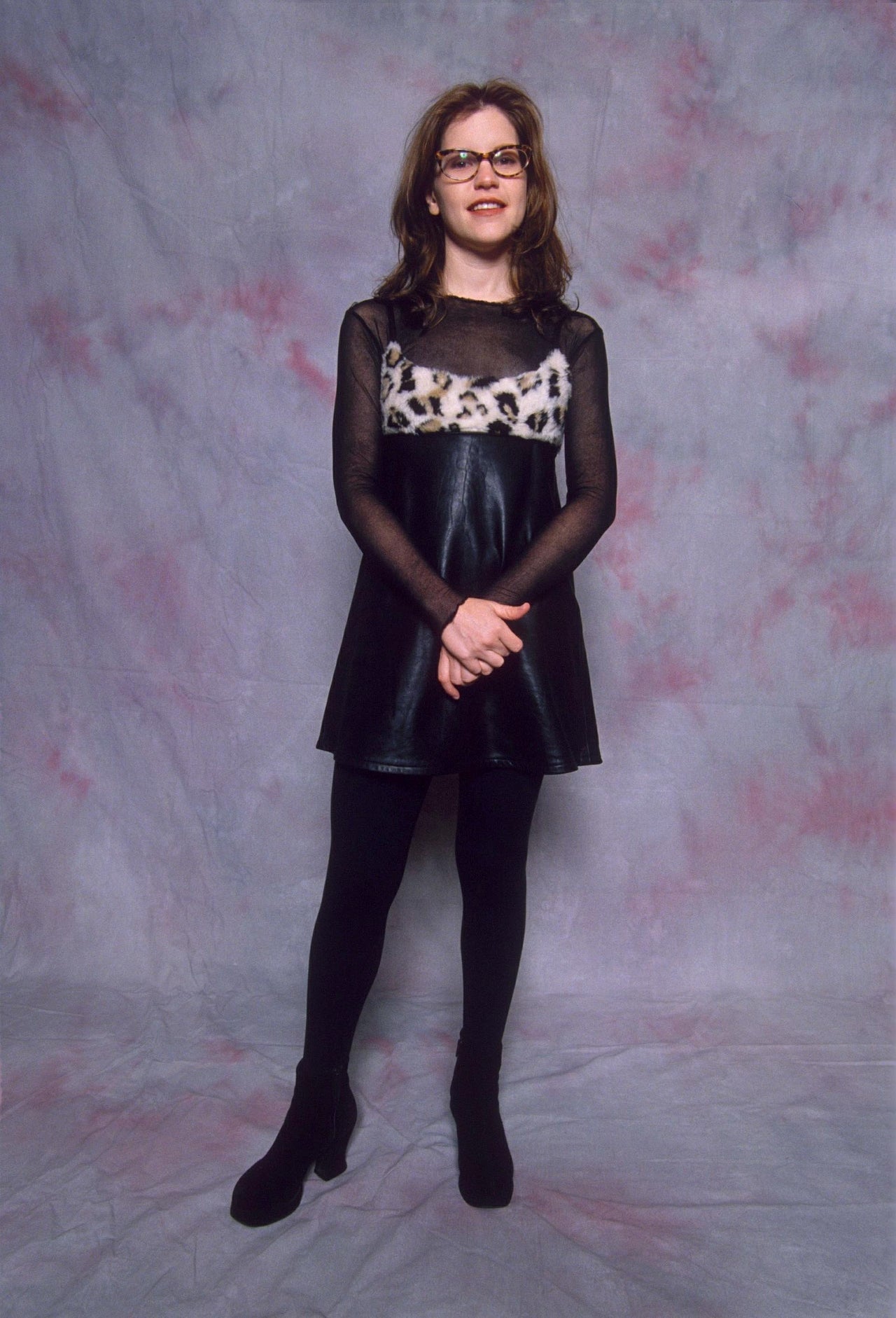
Brian Rasic via Getty Images
“I don’t like mustard yellow,” she said. “But somehow, I said, ‘Okay,’ and wore the mustard yellow tights. That picture — to this day I’m like, ‘Why did I do that?’”
If Loeb had her way, that picture would have looked more like one of the outtakes — her with a frying pan in her hand, curlers in her hair, wearing a tulle skirt (“I love anything tulle”), white tank top and full makeup. “That was me,” she said. “Turning things inside out.”
But no matter how much she was quietly yet determinedly breaking barriers in some ways, she was still subjected to banal questions from the press about her appearance and not her songs. “For a while, I was like, ‘Talk about my songwriting and my guitar playing and my amps,’” she said. “People wanted to talk about my glasses.”
Though her glasses weren’t “something cooked up in a marketing office” at the time (she actually needed her glasses to see), she now has her own eyewear line and in retrospect appreciates that they helped people identify her. “It’s an interest of mine,” she said. “So, why fight that?”
But when Loeb recently looked through a number of old magazine articles about her that her mother kept all these years, she was shocked to realize how awful some journalists were.
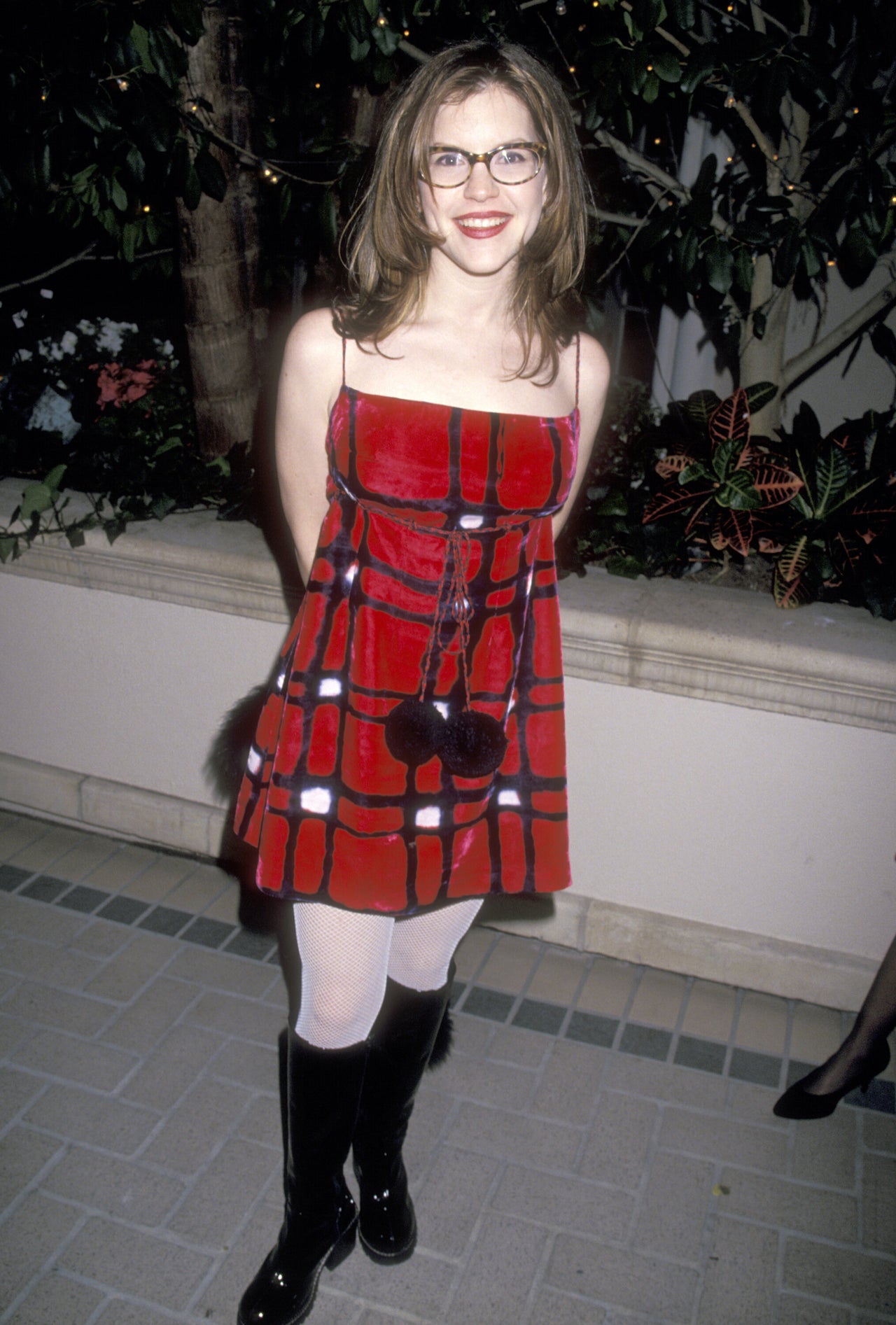
Ron Galella, Ltd. via Getty Images
“They would say, like, ‘She’s so thin, she’s such a waif,’” Loeb said. “I’m like, ‘I’m excited that I’m in shape right now, and that I ate when I was hungry, and I stopped when I was full, and I’m able to eat ice cream and fit into my clothes. I like that.’”
Loeb noted that several reporters that have recently interviewed her have begun their conversation by apologizing for what they wrote about her in the ’90s. Because they realize now that they weren’t fair to her.
“Journalists were so snarky,” she said “I was like, ‘Wow, I’m surprised I’m still a musician today.’”
“I have a very quiet, calm voice, but I must have very thick skin because people were mean,” she continued. “You would work so hard on these albums and arrangements and with your orchestras and your bands and your songwriting, and then people would just slap you down.”
But Loeb, despite everything, is still here. By the end of the ’90s, she added professional acting to her resume with roles on “The Nanny” and in “House on Haunted Hill,” among others. Today, she is a mother and wife (to musician Roey Hershkovitz) who has expanded to acting on a dramatic podcast series like “Power Trip,” co-starring Tatiana Maslany.
She’s still eager to learn and go to acting auditions and loves to reminisce about the ’90s. So much so that she also hosts a radio show, “90s on 9,” where she interviews ’90s-era musicians about their music and experiences.
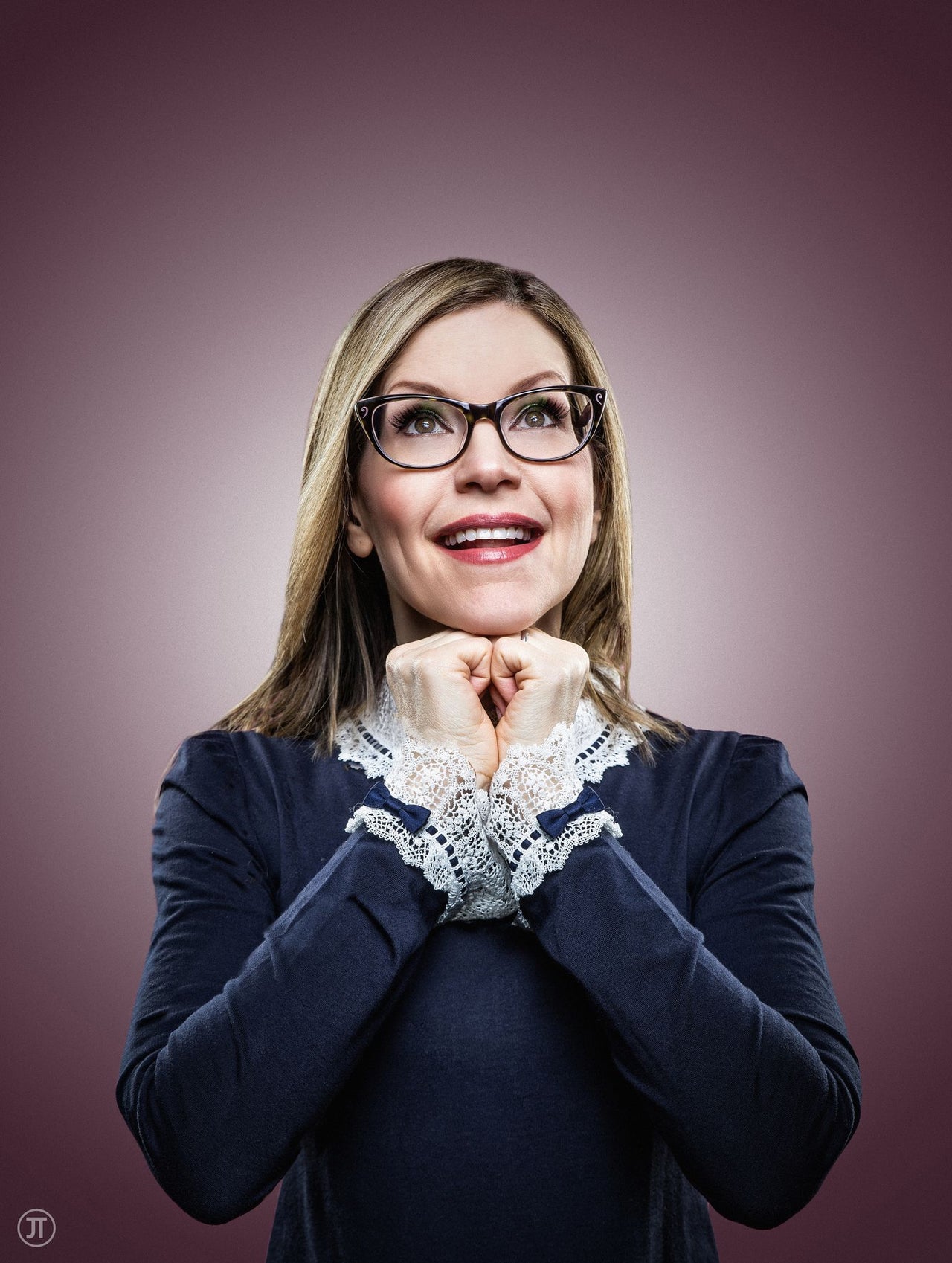
Loeb is still friends with many of her collaborators, both past and present, still performs sold-out concerts (she recently opened for Belinda Carlisle in Ireland), and regularly chats with fellow women musicians like Paula Abdul (whom she was just speaking with the day before we talked).
She even earned her first Grammy in 2018 for Best Children’s Album, because she does those too.
Back in the ’90s, Loeb often had a feeling of “dejection” over not feeling able to change the landscape of the music industry. “It was mostly the white men in charge,” she said. “Almost stereotypical, the idea that you’re fighting The Man. But literally, these were the people in charge of the music business.”
But what remains her intention is having a life and a career that are entirely her own. “I wanted to live a life where I didn’t go back and say, ‘If only I had done what I wanted to do,’” she said.
“The proof is in the pudding,” she said. “You make it, you do it. You don’t let people tell you no. You band together when you can, if you need to, to break down barriers.”
[ad_2]
Source link
